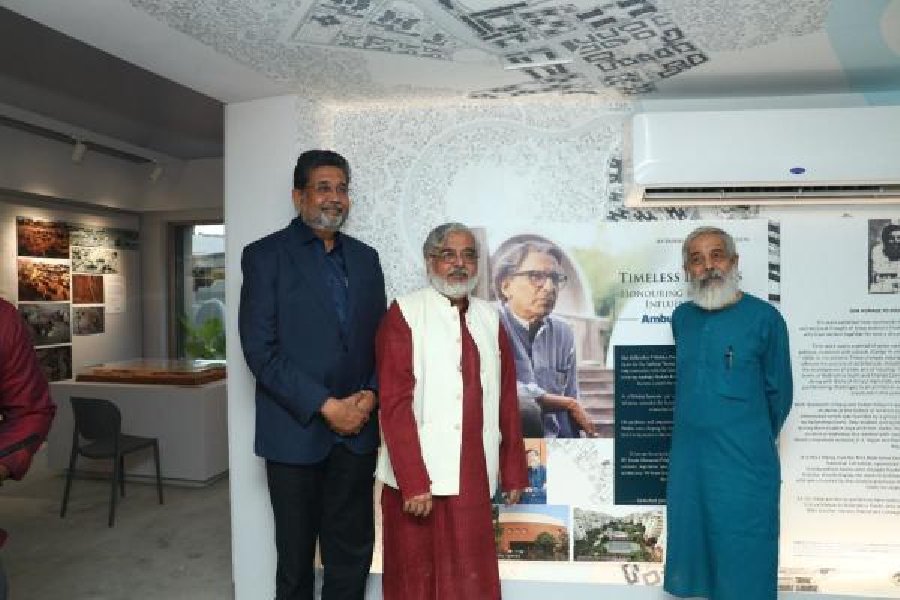The city should preserve the distinct qualities of the various paras or neighbourhoods, along with its unique life on the streets.
The suggestions came from two Ahmedabad-based architects, Neelkanth Chhaya and Sohan Nilkanth, who have worked with and have been influenced by India’s foremost modernist architect Balkrishna Vithaldas Doshi.
“The buildings in the newer parts of Calcutta are getting a lot of attention but the streets are becoming only roads where traffic is swirling around with no human beings,” Chhaya said.
“This is a common problem with all new cities. Calcutta is a very large city and so it needs to create a sense of several distinct neighbourhoods coming together to form the city. You have to understand the life of the city and incorporate it into the space that you are building.”
Nilkanth recounted his experience of working with Doshi on the housing project Udayan in Calcutta.
“We came to Calcutta and then we tried to find out what life in the city is like. And we went to different paras and saw that there were these notice boards with communist propaganda and a light hanging over it. We decided to have this kind of thing in our project because we realised if there is no adda, there is no Calcutta. So we introduced these elements in low-cost and middle-cost housing. There is a place where people can sit down and have their adda. There are also boards there. And we see now that these spaces that we created are being used exactly like that,” he said.
An annual exhibition in memory of Doshi has been instituted by Harshavardhan Neotia, the chairman of Ambuja Neotia. Doshi had designed two projects of Ambuja — Udayan and Upohar.
“This annual exhibition at Kalavaani is our way of celebrating B.V. Doshi’s extraordinary life and work by showcasing the talents of architects who were inspired by his humanistic approach to design,” said Neotia. The exhibition, inaugurated on Friday, will be on for two weeks.
The inaugural edition of the BV Doshi Memorial Exhibition showcased the works of Chhaya, Nilkanth and Kallol Joshi, from Mandala Design Services, at Kalavaani in Swabhumi.
Asked how the city can tackle extreme heat and climate change, Chhaya said: “Everything grows here very easily. I wish Calcutta would look at that as its main strength and start creating plantations on a large scale. And it should also take care of water. In the old days or in the rural areas, there was a pukur (pond) and houses all around it. There was a cycle of water flowing into the pond and then going into the fields. It is possible to do that kind of thing, a continuous cycle of water, in the city if we are careful of the materials that we use. If we can do that we can have a city that is much better.”
Asked if the government should offer incentives to builders to create plantations, Chhaya said: “Incentives don’t work, because people tend to cheat. It has to be a change of heart. Just today, the amount of rainfall in Baroda is unbelievable, there are crocodiles in the streets. This has happened because they haven’t taken care of drainage. As voters, as citizens, as activists, we have to take care of ourselves and then there is government.”
Iterating Chhaya’s argument, Nilkanth said: “In Spain, for example, plantations have reduced temperatures by five degrees. If planted carefully, there will be a lot of difference. Besides, to tackle the heat, you have to make lifestyle changes, too. Architectural design should also change. Houses should be built side by side touching each other so the sun can only heat up the walls that are exposed. But now as we build separate houses, all four walls are heating up. We have to bring in cross ventilation. All these old designs are going away and they are making glass boxes now.”
Some of the most interesting experiments in the world today are looking at sustainability not as a technical problem but as a societal issue.










